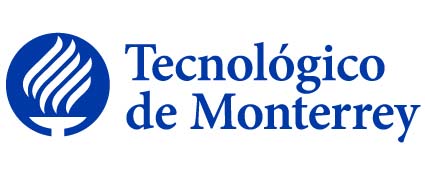
|
|||||
Disciplina asociada:Tecnología de Alimentos |
|||||
Escuela:
Por definir
|
|||||
Departamento Académico:
Por definir
|
|||||
Programas académicos: |
|||||
Requisitos:(Haber Aprobado TA4000) |
|||||
Equivalencia:ME4098 |
|||||
Intención del curso en el contexto general del plan de estudios: |
|||||
Objetivo general de la Unidad de Formación: |
|||||
| El alumno estudiará los modelos básicos que describen los procesos biológicos más importantes para la vida: modelos enzimáticos, modelos de crecimiento celular, modelos de metabolismo celular, y modelos de transporte a través de membranas y tejidos. Al finalizar el curso el alumno será capaz de aplicar conceptos matemáticos, termodinámicos, cinéticos y fisiológicos en la construcción y uso de modelos que le permitan reproducir cualitativa y/o cuantitativamente comportamientos biológicos. | |||||
Técnica didáctica sugerida: |
|||||
| No especificado | |||||
Bibliografía sugerida: |
|||||
|
LIBROS DE TEXTO: * Bailey, James E. (James Edwin), 1944-, Biochemical engineering fundamentals/James E. Bailey, David F. Ollis, 2nd. Edition, New York: McGraw-Hill, c1986, 70032122 * Bailey, James E. (James Edwin), 1944-, Biochemical engineering fundamentals/James E. Bailey, David F. Ollis, New York: McGraw-Hill, c1977, 70032106 * William H. Press... [et al.], Numerical Recipes in Fortran 90: The art Parallel Scientific Computing, 2nd. Edition, Australia: Cambridge University Press, 1999, 0521574390 |
|||||
Perfil del Profesor: |
|||||
|
(140701)Doctorado en Ingeniería Química ; (260202)Doctorado en Bioquímica ; (260203)Doctorado en Biofísica CIP: 140701, 260202, 260203 |
|||||
|
|||||
Discipline:Food Technology |
|||||
School:
Undefined
|
|||||
Academic Department:
Undefined
|
|||||
Programs: |
|||||
Prerequisites:( TA4000) |
|||||
Equivalences:ME4098 |
|||||
Course intention within the general study plan context: |
|||||
Course objective: |
|||||
| In this course, we studied the basic models that describe relevant life processes: enzymatic, growth kinetics, metabolic models, and transport models. At the end of the coursework, the student will be able to apply and integrate mathematical, thermodynamic, kinetic, and biochemical concepts on the construction and implementation of mathematical models to reproduce biological dynamical behaviors. | |||||
Teaching and learning tecniques: |
|||||
| Not Specified | |||||
Suggested Bibliography: |
|||||
|
TEXT BOOKS: * Bailey, James E. (James Edwin), 1944-, Biochemical engineering fundamentals/James E. Bailey, David F. Ollis, 2nd. Edition, New York: McGraw-Hill, c1986, 70032122 * Bailey, James E. (James Edwin), 1944-, Biochemical engineering fundamentals/James E. Bailey, David F. Ollis, New York: McGraw-Hill, c1977, 70032106 * William H. Press... [et al.], Numerical Recipes in Fortran 90: The art Parallel Scientific Computing, 2nd. Edition, Australia: Cambridge University Press, 1999, 0521574390 |
|||||
Academic credentials required to teach the course: |
|||||
|
(140701)Doctoral Degree in Chemical Engineering and (260202)Doctoral Degree in Biochemistry and (260203)Doctoral Degree in Biophysics CIP: 140701, 260202, 260203 |
|||||